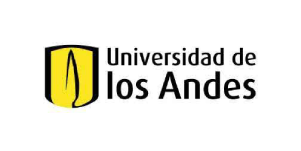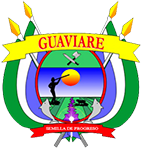About us


Mission
FCDS supports the sustainable and equitable economic development of human populations, especially in rural areas, while preserving these populations’ natural and social conditions.
The goals of FCDS's work in the regions:
- Promote environmental stewardship, nature conservation, and sustainable land use through training and technical-capability-building schemes for local organizations, institutions, private companies, and development sectors.
- Strengthen the technical expertise of social organizations and public bodies to establish environmental management and regulation processes for development sectors via training exercises; exchanges; implementation of best practices; analysis and monitoring of territorial changes, pressures, and threats.
- Cooperate with public bodies, social organizations, and the private sector to create protected areas and implement their participatory management. Establish the effective management of indigenous reservations, rural settlement clusters, and campesino reserve zones through the development of multisectoral agreements, implementation of procedures for the establishment of protected areas, and support in the implementation of territorial management instruments and models.
- Promote the participatory application of Law by enhancing the capability of both institutions and society to effectively manage socio-environmental conflicts.
- Promote public awareness and policy advocacy by creating tools for communication and information on priority issues.
Intervention strategies
FCDS devises and implements medium and long-term programs for the conservation and sustainable development of the Amazon region. It does this by managing socio-environmental conflicts as a means of holding back the agricultural frontier, protecting ecosystems, and creating conditions for the sustainable development of the rural population (campesinos, settlers, and indigenous peoples). This approach is implemented through the following Strategies for Intervention.
Sustainable economic alternatives
This strategy includes actions that can be taken to identify and implement production chains, technical support, and participation of the private sector. It includes Diversified Community Forestry, ecological restoration, forest conversion reversal, use of fishery resources, sustainable tourism, and recognition of the rights of community organizations to use public natural resources.
Sectoral cohesion and best practices
We are currently involved in joint initiatives with the relevant authorities and the private sector, for the following:
a) Provide guidance on environmental offsets for sectoral projects, as well as mandatory and voluntary investments by the private sector.
b) Assess, plan, and manage the impacts associated with development projects (roads, extractive industries).
c) Create the conditions necessary for production model viability and sustainability with the involvement of the community and the commitment of private businesses and the agricultural and livestock sectors.
Land-use zoning and development planning
This strategy is intended to contribute to the collection and analysis of key information to support more accurate environmental and land-use planning. This entails contributing to the design of public policies, strengthening processes of land management and environmental planning, establishing protected areas and ecological corridors and supporting their management, promoting the management of indigenous reserves and campesino reserve zones, strengthening mechanisms for the application of Law, and conducting initiatives with the relevant authorities for the recognition of property rights.
Governability and Governance
A strategy designed to strengthen the capabilities of local, environmental, and sectoral authorities, as well as those of local organizations and communities, so that they may participate more effectively and equitably in the design and implementation of sustainable production models; local development planning and management; regulation of natural resource use; prevention of cumulative and synergistic impacts of development projects and extractive industries; management of areas of environmental importance; and coordinated efforts to address the causes, drivers, and agents of deforestation.
Tracking and Monitoring
FCDS monitors:
1. The production model, ensuring the effective participation of local organizations.
2. Private and public investment.
3. The planning and development of any sectoral projects that could pose a risk to conservation and sustainable development.
Tools
- Physiographic analysis
- Prospective modeling and analysis of changes to the territory
- Development of methodologies to facilitate multi-stakeholder dialogue and cooperation
- Promoting inter-institutional alliances for decision making and the collection and analysis of information
- Providing opportunities for dialogue, information gathering, and creation of community agreements
- Regional Strategic Environmental Assessments
- Analysis of cumulative and synergistic impacts
- Development of capability-building processes and exchange of experiences
- Social and biological inventories
- Community monitoring
- Monitoring through remote sensing
- Participatory restoration
- Gathering and dissemination of information for public awareness and decision making
Partners












































Collaborators













